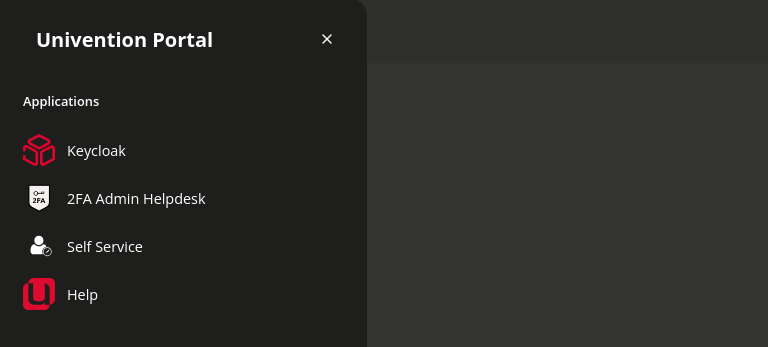6.15. Portal#
The Portal is the central entry point to Nubus for Kubernetes. This section covers configuration aspects around the portal.
See also
- Customization of portal theme
in Univention Nubus for Kubernetes - Nubus Customization and Modification Manual [3] for information about the customization of the Portal theme.
- Portal Service
in Univention Nubus for Kubernetes - Architecture Manual [2] for information about the architecture of the Portal Service in Nubus for Kubernetes.
6.15.2. Automatic sign-out from the Portal#
Added in version 1.15.0.
The Portal automatically signs out the user when identity provider Keycloak notifies the Portal that a user session ends. This ensures that all open portal tabs immediately reflect the updated session state and prevents the session from appearing active after the identity provider terminated the session. Nubus for Kubernetes has the automatic sign-out activated by default.
6.15.2.1. Deactivate automatic sign-out#
By default, Nubus for Kubernetes has the automatic sign-out activated. To deactivate it, set the corresponding UCR variable with the following steps:
Add the lines shown in Listing 6.50 to your
custom_values.yaml.global: configUcr: portal: reload-tabs-on-logout: "false"
To restart the UMC Gateway deployment, run the commands in Listing 6.51.
$ export NAMESPACE_FOR_NUBUS="Set to your Kubernetes namespace" $ export RELEASE_NAME="The Helm Chart release name" $ kubectl \ --namespace "$NAMESPACE_FOR_NUBUS" \ rollout restart \ deployment "$RELEASE_NAME-umc-gateway"
6.15.2.2. Performance impact#
The automatic sign-out establishes a persistent Server-Sent Events (SSE) connection for each active browser session. Each connection remains open for the duration of the session and transmits minimal data—an initial handshake and a single sign-out notification.
The server maintains one idle TCP connection per active session. Modern asynchronous web servers handle numerous long-lived connections efficiently. On the client side, a SharedWorker manages a single SSE connection shared across all open portal tabs, minimizing redundant connections.
In environments with many concurrent sessions, the primary resource consideration is the number of open connections. However, the overall performance impact remains negligible under typical workloads.
